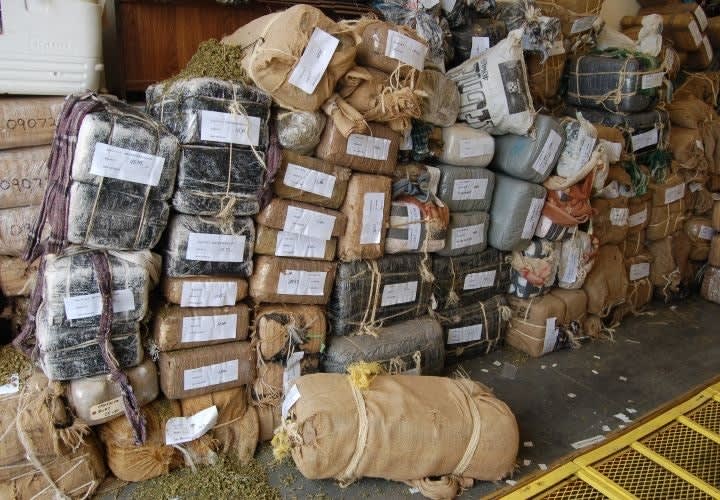Investigative reporters from the Associated Press interviewed dozens of federal agents and local police. They reviewed hundreds of court documents. The results seem to support law enforcement reports of increased cartel presence in numerous non-border cities. Cartel operatives move into tree-lined neighborhoods and appear unremarkable. They try to fit in to the community. Neighbors are often surprised when SWAT teams show up to raid the residence. They watch police cart away large seizures of drugs and weapons.
About 1,700 miles north of the U.S.-Mexico border, the Chicago Crime Commission, a non-governmental agency that tracks crime trends in its region, recently named the
Sinaloa Cartel's
leader,
Joaquin "El Chapo" Guzman
, as the city's "Public Enemy No. 1." This title was last held by Al Capone. Unlike Capone, Chapo has probably never set foot in the city. However, the cartel's narcotics have now flooded America's Second City.
This supply of illicit drugs fuels the violent gang turf wars now engulfing Chicago. James O'Grady, the Chicago police commander who oversees narcotics investigations, has said street gang disputes over turf accounted for most of the city's 500 murders in 2012. Jack Riley, the head of the Drug Enforcement Administration's Chicago office, has said the cartel is "probably the most serious threat the United States has faced from organized crime." Riley also argues that the cartels should be seen as an underlying cause of Chicago's disturbingly high murder rate.
Chicago gang cop Joe Sparks has been sending me photographs and news articles of Mexican cartel activity in Chicago for several years. Chicago authorities began seeing that the cartels were putting their own "deputies on the ground" in Chicago two or three years ago, said Art Bilek, executive vice president of the Crime Commission. "Chicago became such a massive market ... it was critical that they had firm control."
Firm control meant that they couldn't continue to rely on their American gang partners—their distributers and enforcers. In order to ensure their continued profits and to prevent skimming by middle men, cartel leaders sent Mexican drug cartel members and even members of their own families to the U.S. to run the business. In 2008, Jose Gonzales-Zavala was sent by the
La Familia Cartel
to the U.S. to oversee wholesale shipments of cocaine to Illinois, Wisconsin and Indiana. The former taxi cab driver and father of five settled in a middle-class neighborhood in Joliet, southwest of Chicago.












